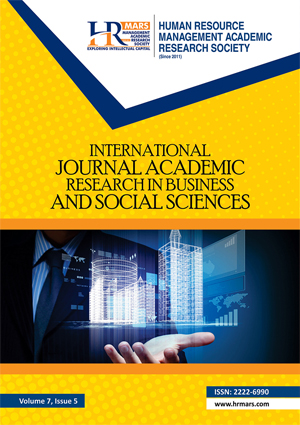The main challenge faced by the Majlis Agama Islam Negeri (MAIN) in their efforts to develop the wakaf lands productively is the lack of funds. To overcome this, MAIN has implemented several halal financing methods, either traditional or contemporary. One of the halal financing methods that MAIN is currently paying attention to is renting or leasing wakaf properties (building and land wakaf) to individuals and even non-government companies or Government Link Company (GLC) to productify these wakaf properties, more commonly known as wakaf distribution methods. Majlis Agama Islam Negeri Pulau Pinang (MAINPP) is one of the MAINs who are rather advanced in developing the wakaf properties productively, using the method of ijarah wakaf. The implementation is proven to successfully productify the wakaf properties in Penang. Based on this phenomena, this research is done to achieve two goals. First, to identify the development project on the wakaf properties in Penang which applied the method of ijarah wakaf. Second, to analyse the effect of the implementation of the method in productifying the wakaf properties. This research involves methods of collecting data from document sources and in-depth interviews with MAINPP wakaf officers. Content analysis is used for the analysis of data. The findings showed that there are several development projects in Penang which applied the ijarah wakaf by the MAINPP, including the Perumahan Wakaf Seetee Aisah in Seberang Jaya and Perumahan Wakaf Khan Mohamed in Georgetown, Penang. The analysis shows that the application of the ijarah wakaf successfully productify the wakaf properties in Penang because the benefits of such development can be taken advantage of.
Al-Bakri, Z. M. (2014). Al-Fiqh al-Manhaji: Muamalat dan kewangan Islam dalam fiqh al-syafi’i. Selangor: Darul Syakir Enterprise.
Bahari, Z. (2012). Pemerkasaan instrumen wakaf dalam pembangunan ekonomi. Siri Kertas ISDEV, No. 38. Pulau Pinang: Pusat Kajian Pengurusan Pembangunan Islam (ISDEV), USM.
Bahari, Z. (2013). Pembiayaan pembangunan pengajian tinggi: Kes pembangunan wakaf kompleks ISDEV, Universiti Sains Malaysia. Kertas kerja yang dibentangkan di Seminar Serantau Institusi Pengajian Tinggi Islam (SeiPTI2013) di Brunei pada 4-5 Disember bertempat di Bandar Sri Begawan, Brunei.
Bahari, Z., & Rahman, F. A. (2012). Modes and risk of financing for waqf development: The case of Seetee Aisyah waqf in Penang, Malaysia. Siri Kertas ISDEV, No. 37. Pulau Pinang: Pusat Kajian Pengurusan Pembangunan Islam (ISDEV), USM.
Chandra, H., & Rahman, A. A. (2010). Waqf investment: A case study of Dompet Dhuafa Republika, Indonesia. Shariah Journal, Vol. 18, No. 1, hlm. 163-190.
Hamid, S. S. (2016). 11,091. 82 hektar tanah wakaf. Di akses daripada, http://www.hmetro.com.my/node/111064#sthash.eBuiCEHO.dpuf pada 29
Januari 2016.
Hassan, S. H. M., Bahari, Z., Aziz, A. H. A., & Doktoralina, C. M. (2020). Sustainable Development of Endowment (Waqf) Properties. International Journal of Innovation, Creativity and Change, 13(4), 1135-1150.
Rani, M. A., Ismail, C. Z., & Bhari, A. (2015). Pengurusan Ijarah Wakaf: Pemangkin transformasi pembangunan ekonomi di negeri Selangor. Proceedings of the International Conference on Waqf 2015 (ICW2015). Kuala Terengganu, Terengganu: Universiti Sultan Zainal Abidin (UNISZA).
Omar, A. A., Bakar, A. A., Shuib, M. S., & Jusoh, M. K. A. (2014). Penggunaan kaedah B.O.T dalam usaha membangunkan tanah wakaf Majoodsaw Pulau Pinang. Kerta kerja yang dibentangkan di Muktamar Waqf Iqlimi 2014, The Asean Endowment Seminar 2014, pada 29 April 2014, bertempat di Universiti Sains Islam Malaysia, Nilai, Negeri Sembilan. Diakses dari
(UUM)1file:///C:/Users/User/Downloads/PENGGUNAAN%20KAEDAH%20Bot%20dalam%20pembangunan%20harta%20wakaf.pdf
Omar, H. H., & Rahman, A. A. (2015). Pembiayaan pembangunan harta wakaf menggunakan sukuk. Kuala Lumpur: Universiti Malaya.
Omar, H. H., & Rahman, A. A. (2013). Aplikasi sukuk dalam usaha melestarikan aset wakaf: Pengalaman pemegang amanah wakaf terpilih. Jurnal Syariah, vol. 21, No. 2, hlm. 89-116.
Othman, R. (2015), Wakaf Tunai: Sejarah, Amalan dan Cabaran Masa Kini. Kuala Lumpur, Dewan Bahasa dan Pustaka.
Rachmad, D. (2014). Strategi pengembangan investasi harta wakaf: Suatu kerangka konseptual. Inovbiz, Vol. 2, No. 1, hlm. 69-82.
Saniff, S. M., & Hasan, W. N. W. (2009). Isu dan cabaran dalam pasca PTW: Kajian kes Pangsapuri Wakaf Khan Mohamed di Jalan Perak, Pulau Pinang. Kertas kerja yang dibentangkan di Worskhop Antarabangsa II, Universitas Muhammadiyah Sumatera Utara (UMSU), Medan, Indonesia, pada 4-10 Mei 2009.
In-Text Citation: (Hassan et al., 2021)
To Cite this Article: Hassan, S. H. M., Abdullah, S. R., Fazial, F., Hamid, C. K., & Yahaya, S. (2021). The Implementation of Ijarah in Producing the Wakaf Property: Studies in Penang, Malaysia. International Journal of Academic Research in Business and Social Sciencess, 11(1), 849–857.
Copyright: © 2021 The Author(s)
Published by HRMARS (www.hrmars.com)
This article is published under the Creative Commons Attribution (CC BY 4.0) license. Anyone may reproduce, distribute, translate and create derivative works of this article (for both commercial and non-commercial purposes), subject to full attribution to the original publication and authors. The full terms of this license may be seen at: http://creativecommons.org/licences/by/4.0/legalcode
